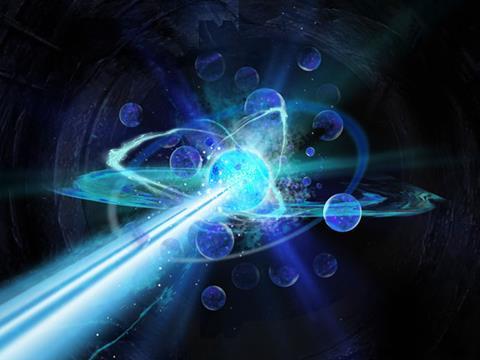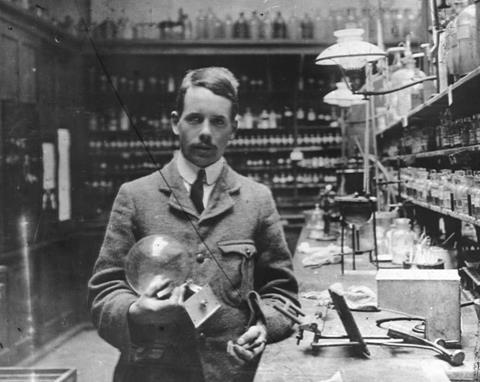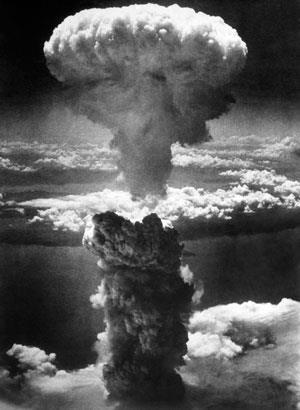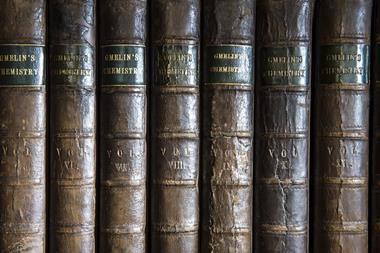William Prout’s answer to this perennial question launched two centuries of controversy. Mike Sutton reports

Although recent results from the Large Hadron Collider appear to support the standard model of nuclear structure, debate about the ultimate composition of matter continues. String theory has supporters (including Stephen Hawking), as does supersymmetry. Meanwhile, dark matter – though regarded as essential by astrophysicists – remains enigmatic and elusive. Such arguments have a long pre-history.
The earliest humans recognised that different materials have different properties, and exploited them inventively, using flint to make tools and red ochre to decorate cave walls. Distinguishing between different substances became an important function of human speech – even the languages of so-called primitive tribal peoples are rich in such descriptive terms. Similarly, categorising substances as ‘clean’ or ‘unclean’ forms a cornerstone of many religions.
However, some early Greek philosophical texts argue that the rich diversity of the material world all derives from modifications of a single elementary substance. Around 580 BC Thales of Miletus proposed that the fundamental element was water. Somewhat later, Heraclitus of Ephesus claimed it was fire, and there were other contenders. Eventually a consensus emerged – there were four terrestrial elements (fire, water, earth and air) and one more in the heavens (aether). With Aristotle’s authority behind it, this five-fold division was accepted for centuries. But belief in a single ultimate element (a world-view often called ‘monism’) never entirely disappeared. In 1815 William Prout revisited the idea, with far-reaching consequences.

Evidence against Prout’s hypothesis accumulated throughout the 19th century, yet several eminent chemists acknowledged its underlying logic. It gained fresh credibility from early 20th century advances in nuclear science, and in 1913 Henry Moseley demolished a major obstacle to its rehabilitation by using x-rays to order the elements by atomic number rather than mass. When the first world war began Moseley enlisted, and he died at Gallipoli in 1915. This year, his discoveries are being commemorated at the University of Oxford’s Museum of the History of Science. However, their historical significance becomes clearer if they are viewed alongside the bold proposal Prout made a century earlier.
Walking the wards
William Prout was a late developer. Born into a Gloucestershire farmer’s family in 1785, he got a sketchy education (probably interrupted by spells of agricultural work). In 1805, aged 20, he joined the Reverend Thomas Jones’ school in Bristol, and while teaching the juniors basic skills he received coaching in advanced subjects required for admission to the University of Edinburgh. He achieved this in 1808, at the relatively mature age of 23.
In Edinburgh, Prout lodged with Alexander Adam (whose daughter Agnes he was to marry in 1814). Having graduated as a doctor of medicine in 1811, he spent the customary period walking the wards in London hospitals before qualifying as a licentiate of the Royal College of Physicians in 1812. This license allowed him to establish a practice in London, but that was not his only ambition. Since his days in Bristol he had been actively involved with chemistry, and by 1814 he was confident enough to offer some private chemical lectures. They helped him gain admission to London’s scientific community, and he became a fellow of the Royal Society in 1819.
Throughout his medical career, Prout investigated chemical phenomena with biological significance. He proved that gastric juices contain hydrochloric acid, and his tripartite division of nutrients into ‘saccharinous’ (carbohydrate), ‘oleaginous’ (fat) and ‘albuminous’ (protein) was widely accepted. Chemical analyses were central to his study of conditions affecting the urinary system, like diabetes and kidney stones, and his 1821 treatise on them had five English editions and was translated into French and German. However, it was his speculations about the unity of matter which had the greatest impact.
Bold speculations
Prout’s first publication on this topic appeared (anonymously) in 1815. It began ‘The author of the following essay submits it to the public with the greatest diffidence. He trusts, however, that its importance will be seen’. Its title On the relation between the specific gravities of bodies in their gaseous states and the weights of their atoms might seem uncontroversial, but at the time this was a hot topic.

The chemical atomic theory, which Manchester’s John Dalton based on the combining weights of elements, was barely a decade old. Joseph Gay-Lussac’s experiments in Paris on the combining volumes of gaseous elements were even more recent. Apparent discrepancies between the gravimetric and volumetric calculations puzzled many chemists. (This confusion continued for decades, until the significance of Avogadro’s law was understood.) Prout attempted to clarify things by collating information on the relative weights and volumes in which the elements combined, but his article had a sting in its tail.
Most of Prout’s numerical data came from publications by eminent chemists, though he had repeated many measurements himself. They see med to show that that atomic weights (relative to hydrogen) had integral values, and he recalled, ‘I had often observed the near approach to round numbers before I was led to investigate the subject’. He also noted that many atomic weights were divisible by four (and some by eight), and wondered whether all substances might be made up (‘compounded’) of hydrogen and oxygen.
This radical query was absent from Prout’s next paper, published in 1816, which was mainly devoted to correcting minor errors in its predecessor. However, he concluded with another bold speculation. After reiterating that all atomic weights (relative to hydrogen) appeared to be whole numbers, Prout suggested that hydrogen was the fundamental primary matter from which all substances were composed – the proto hyle proposed by ancient Greek philosophers like Thales.
This thought was, Prout acknowledged, ‘not altogether new’. Several of his contemporaries suspected that many so-called elements were not simple substances. (Humphry Davy – who had discovered several of them – preferred the term ‘undecompounded bodies’.) Nevertheless, the idea that all the supposed elements were made up of hydrogen atoms became known among chemists as Prout’s hypothesis. Though frequently criticised, it continued to stimulate debate long after his death in 1850.
Illusion confusion
One early supporter was the Scottish chemist Thomas Thomson, whose atomic weight measurements seemed compatible with the hypothesis. However, the eminent Swedish chemist Jöns Berzelius disagreed, criticising Thomson’s experimental technique in intemperate language. Despite Berzelius’ opposition, interest in Prout’s idea persisted. During the 1840s and 1850s Jean-Baptiste Dumas – the leading French chemist of the era – gave it serious consideration. But the Belgian Jean Stas, though initially sympathetic, concluded in 1860 that the hypothesis was ‘pure illusion’. Having measured many atomic weights precisely, he found that they deviated significantly from whole numbers.
Although Stas’ results were impressive, the Swiss Jean Marignac argued that the closeness of so many atomic weights to integral values was statistically unlikely to have arisen by chance. He also proposed (as Dumas had done) that non-integral atomic weights might be explained if the ultimate elementary particles had a mass exactly half, or a quarter, of a hydrogen atom. Finally, Marignac suggested that a composite atom’s mass could be less than the combined masses of its components – a wild speculation which eventually proved correct.
Meanwhile, discoveries in physics generated fresh arguments for the divisibility of atoms. The English spectroscopists Norman Lockyer and William Crookes claimed that anomalous emission spectra revealed the breakdown of elements under extreme conditions – inside the sun and stars, or in high-voltage electrical discharges. In 1886 Crookes suggested that the fundamental component of matter was something like Prout’s proto hyle (also known as protyle) which generated the heavier elements by an evolutionary process while cooling from stellar to terrestrial temperatures.
The idea of atomic evolution gained momentum in 1902 when the New Zealand physicist Ernest Rutherford and the English chemist Frederick Soddy, working at Canada’s McGill University, announced that radioactive decay involved transmutation of one element into another. Soddy later decided that the status of several radioactive substances previously thought to be elements was problematic. By 1913 he was tired of writing ‘elements chemically identical and non-separable by chemical methods’, and began calling them ‘isotopes’ – a name suggested by the Scottish doctor Margaret Todd. In the same year, Henry Moseley’s work on x-ray spectra started bringing order into this confusing array of entities.

Atomic numbers discovered
Unlike Prout, Moseley grew up in academia. His father and paternal grandfather were science professors (the former at the University of Oxford, the latter at King’s College London), while his maternal grandfather was an expert on molluscs and a fellow of the Royal Society. At Oxford, Moseley shone in mathematics and science (and rowed for his college). On graduating in 1910 he was appointed lecturer in physics at the University of Manchester, and started his research as Rutherford was developing the theory of the nuclear atom there.
In 1913 Moseley began charting the spectrum lines produced when x-rays are diffracted through a crystal lattice. His x-rays were generated by directing cathode rays (electrons) onto targets made from various elements, and by the summer of 1914 he had bombarded samples of many metals. He found that the frequencies of the most intense short-wave line in the x-ray spectrum of each element could be linked, by a simple equation, to that element’s position in the periodic table (represented by an integer which he called its ‘atomic number’).
In the periodic table, most elements were placed in ascending order of atomic weight. But for a few pairs of elements, like argon and potassium, the weight order had to be inverted to locate them in the most appropriate groups. Moseley’s equation explained these anomalies, providing solid grounds for the belief that atomic number was more fundamental than atomic weight.
Moseley’s calculations revealed gaps in the list of atomic numbers, which he assigned to elements as yet undiscovered. (Some of these had long been suspected to exist, and most were subsequently isolated by chemical means.) Meanwhile, at the heavy end of the periodic table, there were apparently more elements than atomic numbers – a problem Soddy was already addressing with his concept of the isotope.
Moseley did not see the full results of his breakthrough – he was shot by a sniper in 1915 while serving with the Royal Engineers. But soon after the war ended, Rutherford’s team made discoveries which revealed the physical foundations of Moseley’s atomic numbers, and incidentally resuscitated Prout’s reputation.
Integral atomic numbers appeared more compatible with Prout’s hypothesis than debateable atomic weights. But what did those numbers actually represent? Rutherford (and independently, the Dutch physicist Antonius Van den Broek), suggested that an element’s atomic number was equal to the net positive charge on its nucleus. If so, Soddy’s isotopes were atoms whose nuclei had the same charge but different masses. The mass spectrograph, developed by British chemist Francis Aston in 1919, confirmed this by identifying many isotopes, and eventually by physically separating some of them.
By 1920 Rutherford had concluded that all the heavier atomic nuclei contained hydrogen nuclei. He inferred this from an experiment in which alpha particles (helium nuclei) fired at nitrogen atoms produced atoms of an oxygen isotope, plus hydrogen nuclei. It seemed that hydrogen nuclei were knocked out of the heavier atoms – but apparently there were other components too. Nuclear masses were too large to be accounted for by the number of hydrogen nuclei needed to provide their positive charges, and Rutherford suspected the extra mass came from neutral particles. (These ‘neutrons’ were later detected by Rutherford’s assistant James Chadwick.) Reviewing these issues at the 1920 British Association meeting, Rutherford suggested calling the hydrogen nucleus a proton – a name he linked explicitly with Prout’s proto hyle.

The Prout
Rutherford’s homage to Prout seems too much like a conventional happy ending to be true. And indeed, there was an unfortunate sequel. Initially, it seemed that the non-integral atomic weights which had frustrated Prout’s supporters could be explained by the fact that in nature many elements exist as mixtures of isotopes. But it became apparent that even pure isotopes do not necessarily have integral atomic mass values. As Marignac had guessed, an atom’s mass need not equal the sum of the masses of its component particles.
In 1915 the American physical chemist William Harkins explained why. He argued that in order to hold the (electrically repulsive) protons together in an atomic nucleus, part of their mass is transformed into binding energy. Harkins called this the ‘mass defect’ of the nucleus. Applying Albert Einstein’s E=mc2 formula to the missing mass indicated that large amounts of energy should be liberated by the fission of heavy nuclei, or by the fusion of light ones.
In the 1940s controlled nuclear fission was accomplished, with devastating results for the Japanese cities of Hiroshima and Nagasaki. Soon afterwards, astrophysicists like Fred Hoyle showed how nuclear fusion inside the sun and stars releases vastly greater amounts of energy, while also creating elements heavier than hydrogen. Prout’s belief that all the elements are made of hydrogen was thus vindicated, though in a way he could never have dreamed of. The non-integral atomic weight values which undermined his hypothesis were also explained, partly by the existence of isotopes, and partly by the conversion of some nuclear mass to binding energy – the ‘mass defect’.
As yet there is no internationally agreed unit of measurement for mass defects. In 1946 American physicist Enos Witmer proposed that it should be set at 1/12 of the binding energy of the deuteron (the nucleus of hydrogen’s heavy isotope), and provisionally named it ‘the prout’, but his suggestion gained little support. Perhaps 2015 might be a good year to revive it?












No comments yet